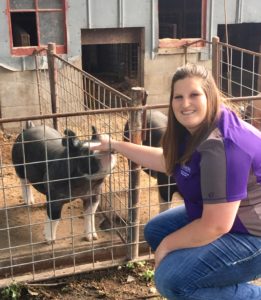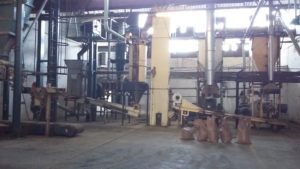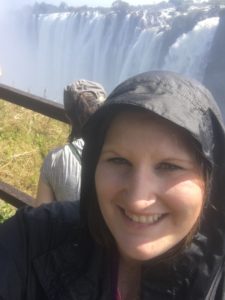 Addi Marston joined SOTG’S internship program to work at Namilco Zambia during the summer. She is a senior at Kansas State University, studying Animal Science and Industry and a member of the KSU Feed Science Club; as a member of this club, Addi has the opportunity to write a spotlight about her internship experience and share it with other students and members of the club.
Addi Marston joined SOTG’S internship program to work at Namilco Zambia during the summer. She is a senior at Kansas State University, studying Animal Science and Industry and a member of the KSU Feed Science Club; as a member of this club, Addi has the opportunity to write a spotlight about her internship experience and share it with other students and members of the club.
Check out Addi’s article about her internship experience in Namilco Zambia!
My name is Addi Marston. I am currently in Lusaka, Zambia working at National Milling Corporation. NMC is owned by the Seaboard Overseas and Trading Group out of Merriam, Kansas. NMC is made up of a flour mill, maize (dry corn) mills, stock feed mill, soybean/soya extrusion and oil expelling, and one grain terminal.
My work has taken place at the Malambo Road site here in Lusaka where the feed mill, maize mill, and soya plant operate. The soya crushing plant produces 60,000 liters (15,850.323 gallons) of crude oil per week and the by products from this process are then conveyed over to the feed mill as full fat soya and low fat soya. The maize mill produces two types of Nshima or maize flour, which mixed with water is the staple food in many southern African countries. The stock feeds plant produces 1,800 metric tons (2,000 US tons) of feed in either mash or pellet form each week.
 We are considered a fully automated commercial mill producing dairy feed, poultry fee, swine feed, and we have a small extruded fish feed plant. All of the feed we produce is packed in 50 kg (110 lb) bags. Most customers buy our product directly from our company’s feed depots around Zambia; while others drive hours to pick up our product directly from our mill.
We are considered a fully automated commercial mill producing dairy feed, poultry fee, swine feed, and we have a small extruded fish feed plant. All of the feed we produce is packed in 50 kg (110 lb) bags. Most customers buy our product directly from our company’s feed depots around Zambia; while others drive hours to pick up our product directly from our mill.
My work on various projects at NMC has been an awesome experience for me. When I first arrived here in Zambia our fish feed plant was shut down because the extruded pellets where not floating nor drying correctly. I have been working closely with the engineering department to develop a slotted slide gate inside the dryer so the pellets can get correct air flow to dry. We have also added steam lines to correctly condition the feed before the extruder to produce floating fish feed which is what our tilapia market demands.
With the other time spent here, I have written and implemented new/revised procedures for the feed mill and the quality assurance lab. A feed mill of this size in Africa has anywhere from 20 to 30 people on staff per shift. Assigning duties and tasks for each person is important to maintain efficiency and organization. We have implemented SOP’s that specify each worker’s tasks and define corrective action when problems arise.
 Finally, during the holidays here in Zambia, I have been able to see one of the seven natural wonders of the world – Victoria Falls. It is the world’s largest sheet of falling water. It makes the border between Zimbabwe and Zambia. It pours roughly 700,000 cubic meters of water every minute. This year they reported it will stop falling in September but quickly pick back up in November during the rainy season.
Finally, during the holidays here in Zambia, I have been able to see one of the seven natural wonders of the world – Victoria Falls. It is the world’s largest sheet of falling water. It makes the border between Zimbabwe and Zambia. It pours roughly 700,000 cubic meters of water every minute. This year they reported it will stop falling in September but quickly pick back up in November during the rainy season.
I have also spent spare time learning and gaining an understanding of the culture and economy here in Zambia.
Zambia is home to 73 tribes, 73 languages, and 10 provinces. Zambia’s leading export is copper. They rank 8th in the world in copper production with over 712,000 tons produced last year.
